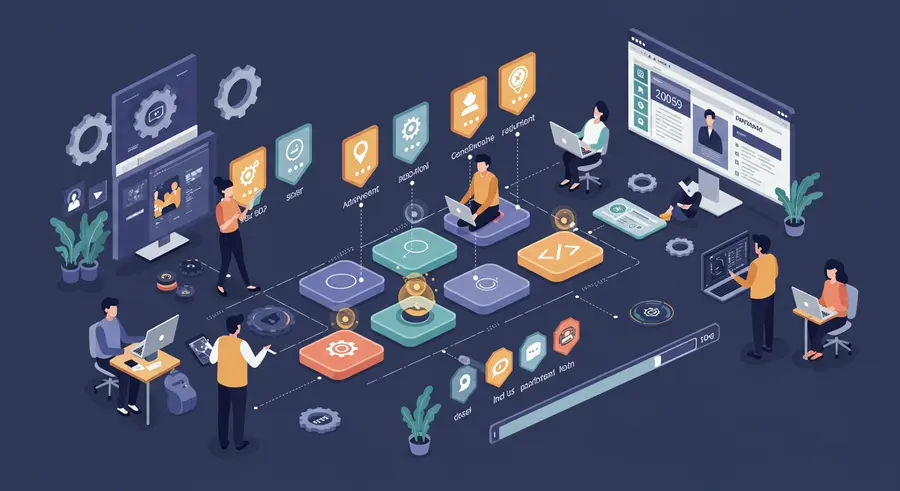Gamifying Agile Methodologies: Supercharge Your Sprints
Unlock new levels of productivity and team morale by infusing game mechanics into your Agile practices.

The Agile Advantage, Amplified
Agile methodologies, such as Scrum and Kanban, have revolutionized software development by promoting flexibility, collaboration, and continuous improvement. These frameworks are inherently iterative and people-centric, making them fertile ground for gamification. By strategically applying game mechanics, teams can amplify the core benefits of Agile, turning everyday tasks into more engaging and rewarding experiences.
Gamifying Agile doesn't mean turning development into a literal game. Instead, it's about leveraging the psychological drivers that make games so captivating—achievement, competition, collaboration, and feedback—to enhance motivation, focus, and ultimately, the quality and speed of software delivery. You can learn more about the foundational principles of Agile at the Agile Manifesto official website.
Key Gamification Techniques for Agile Teams
1. Points and Experience (XP) Systems
Assign points to tasks, user stories, or bug fixes based on complexity, effort, or priority. Developers earn XP for completing work, which can contribute to individual or team levels. This provides a clear measure of contribution and progress.
- Sprint Goals as Quests: Frame sprint goals as "quests" where completing all committed stories yields bonus XP.
- Skill-Based XP: Award XP for demonstrating specific skills or learning new technologies.
2. Badges and Achievements
Recognize specific accomplishments with digital badges. This can range from "Bug Squasher" for fixing a critical number of bugs to "Sprint Hero" for exceptional contribution during a sprint, or "Code Review Champion" for thorough and helpful reviews.
- First-Time Achievements: "First Pull Request Merged," "First Feature Shipped."
- Streak Bonuses: "Perfect Attendance," "X Days of Green Builds."
3. Leaderboards
Introduce leaderboards to foster friendly competition. These can track metrics like tasks completed, story points delivered, or bugs resolved. It's crucial to design leaderboards that encourage positive behaviors and don't inadvertently penalize collaboration or focus on less quantifiable contributions.
- Team vs. Team: If multiple Agile teams exist, a cross-team leaderboard can be motivating.
- Rotating Metrics: Change leaderboard metrics periodically to allow different strengths to shine.
4. Progress Bars and Visual Feedback
Agile boards (Scrum/Kanban) are already visual. Enhance them with gamified progress bars for sprints, epics, or even individual tasks. Visual cues of progress are highly motivating.
- Burndown Charts as "Boss Health": Frame the sprint burndown as defeating a "boss," with each completed task dealing damage.
- Team Avatars: Allow teams or individuals to choose avatars that move along a "journey map" as sprints are completed.
Integrating Gamification into Agile Ceremonies
Gamification can make standard Agile ceremonies more interactive and effective:
- Sprint Planning: Use "planning poker" with themed cards or award points for well-defined stories. Introduce a "challenge" to estimate stories within a certain time.
- Daily Stand-ups: Implement a "talking stick" or a quick "round-robin" game to keep updates concise and engaging. A "kudos" moment where team members can give virtual points to others for help received.
- Sprint Review: Present achievements as "level ups" for the product. Award "audience favorite" points for the best-demonstrated feature.
- Sprint Retrospective: Use gamified formats like "Sailboat" (anchors/wind) or "Starfish" (keep doing/more of/less of/start/stop) with points for actionable insights. Award badges for "Most Valuable Feedback."
Many project management tools like Jira offer features or integrations that can support these gamified approaches. For more on Agile practices with Jira, see Atlassian's guide to Agile with Jira.
Benefits of Gamifying Agile
- Increased Motivation & Engagement: Tasks become less mundane when tied to earning points, badges, or progressing on a leaderboard.
- Improved Focus & Productivity: Clear goals and immediate feedback loops help developers stay focused on sprint commitments.
- Enhanced Team Collaboration: Team-based challenges and rewards foster a sense of camaraderie and shared purpose.
- Better Skill Development: Gamified learning paths can encourage developers to acquire new skills and tackle more complex tasks.
- More Effective Feedback: Game mechanics provide instant, objective feedback on performance and progress.
- Data-Driven Insights: Gamification systems generate data that can highlight areas of improvement for individuals and the team.
Potential Pitfalls and How to Avoid Them
While gamification offers significant benefits, it's important to implement it thoughtfully:
- Overemphasis on Competition: Ensure competition is friendly and doesn't undermine collaboration. Balance individual rewards with team achievements.
- Metrics Gaming: Design systems where "gaming the system" still leads to desired outcomes. Avoid metrics that are easily manipulated without real value.
- Ignoring Intrinsic Motivation: Gamification should enhance, not replace, intrinsic motivators like autonomy, mastery, and purpose.
- Complexity: Keep the gamification rules simple and easy to understand. Overly complex systems can be a distraction.
- Sustainability: Ensure the gamification strategy is sustainable and remains engaging over the long term. Periodically refresh challenges and rewards.
The key is to align gamification mechanics with the core principles of Agile and the specific goals of your team. Start small, iterate based on feedback, and always prioritize genuine engagement over superficial game elements.
Back to Overview